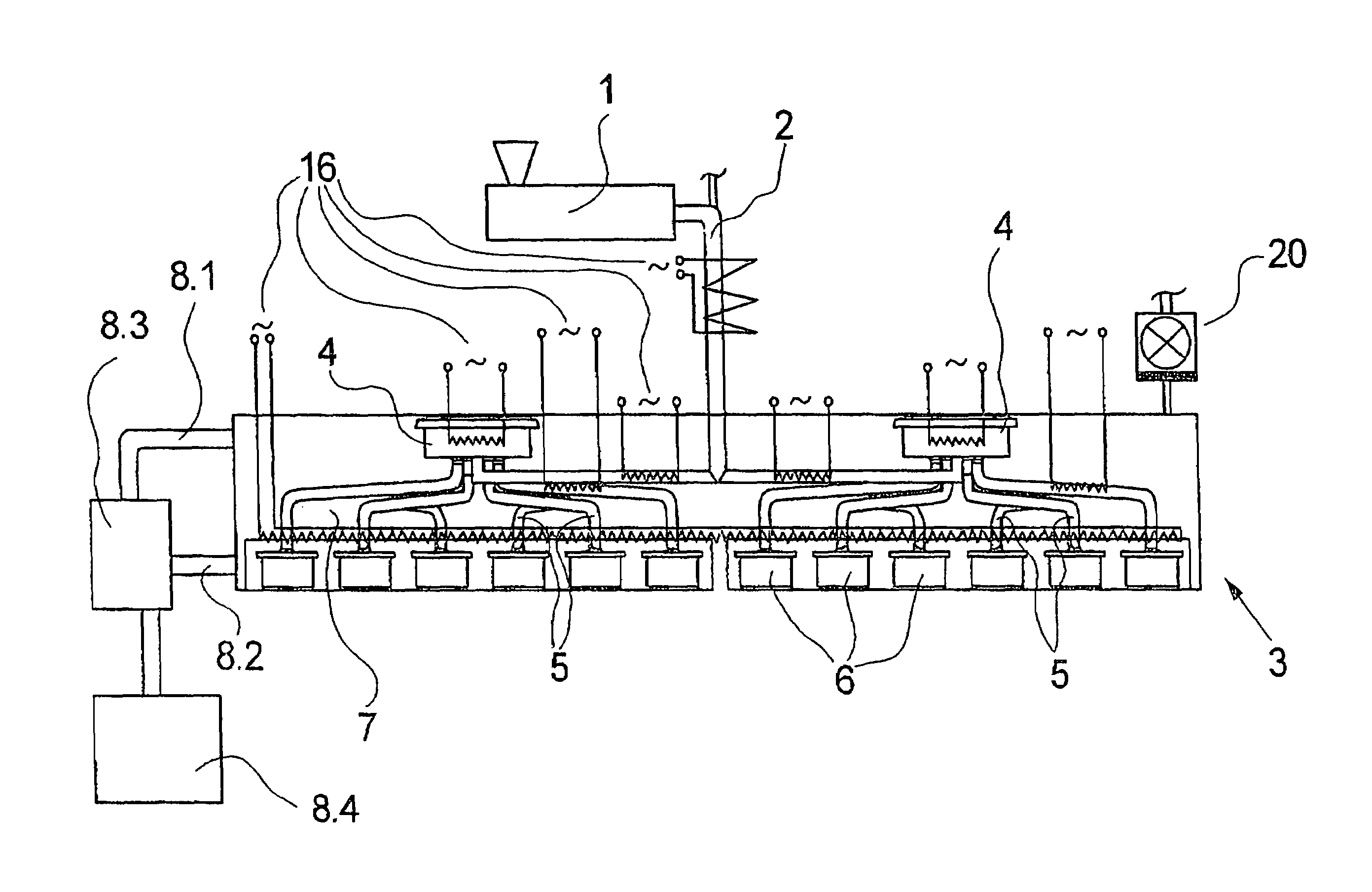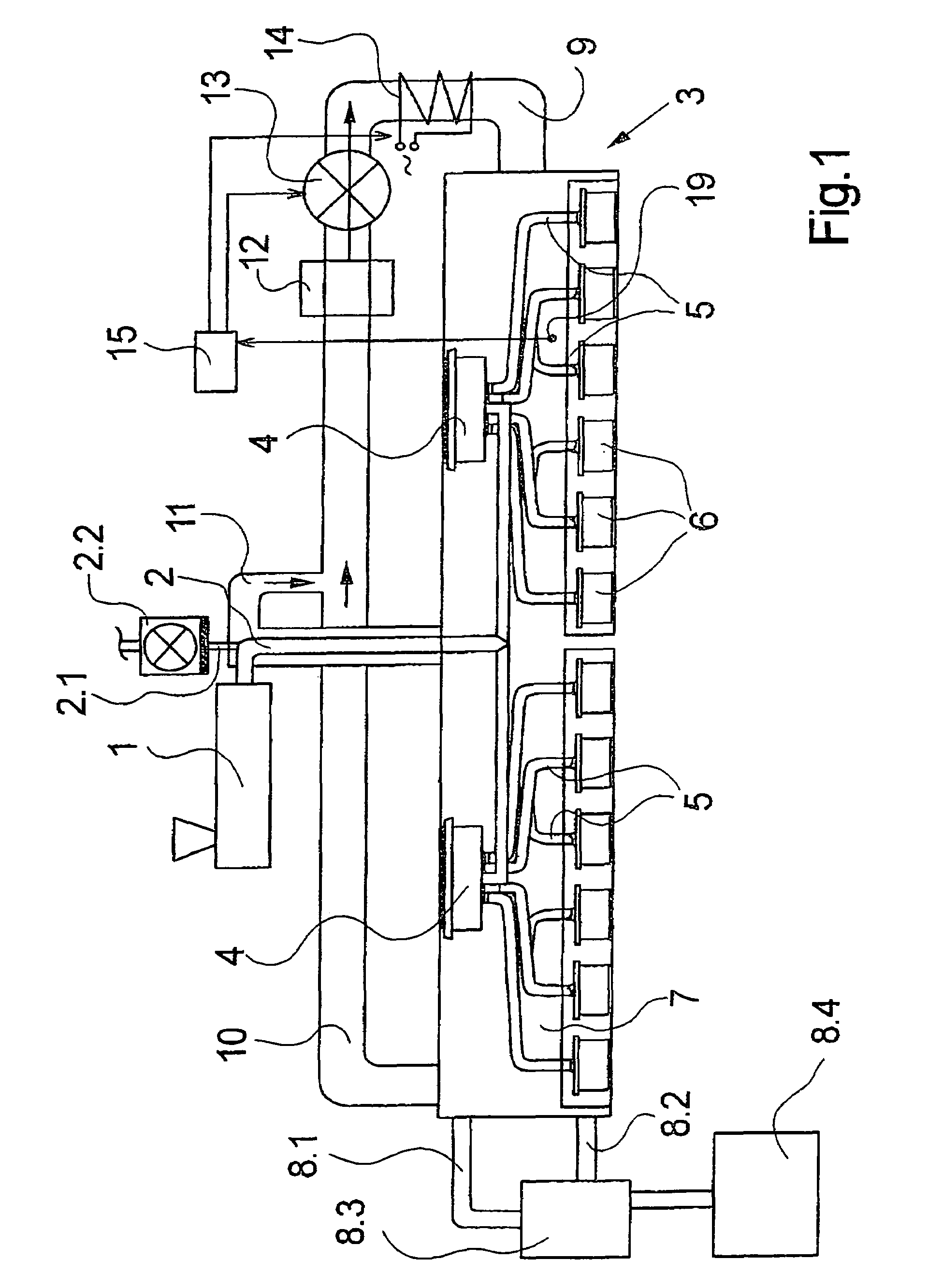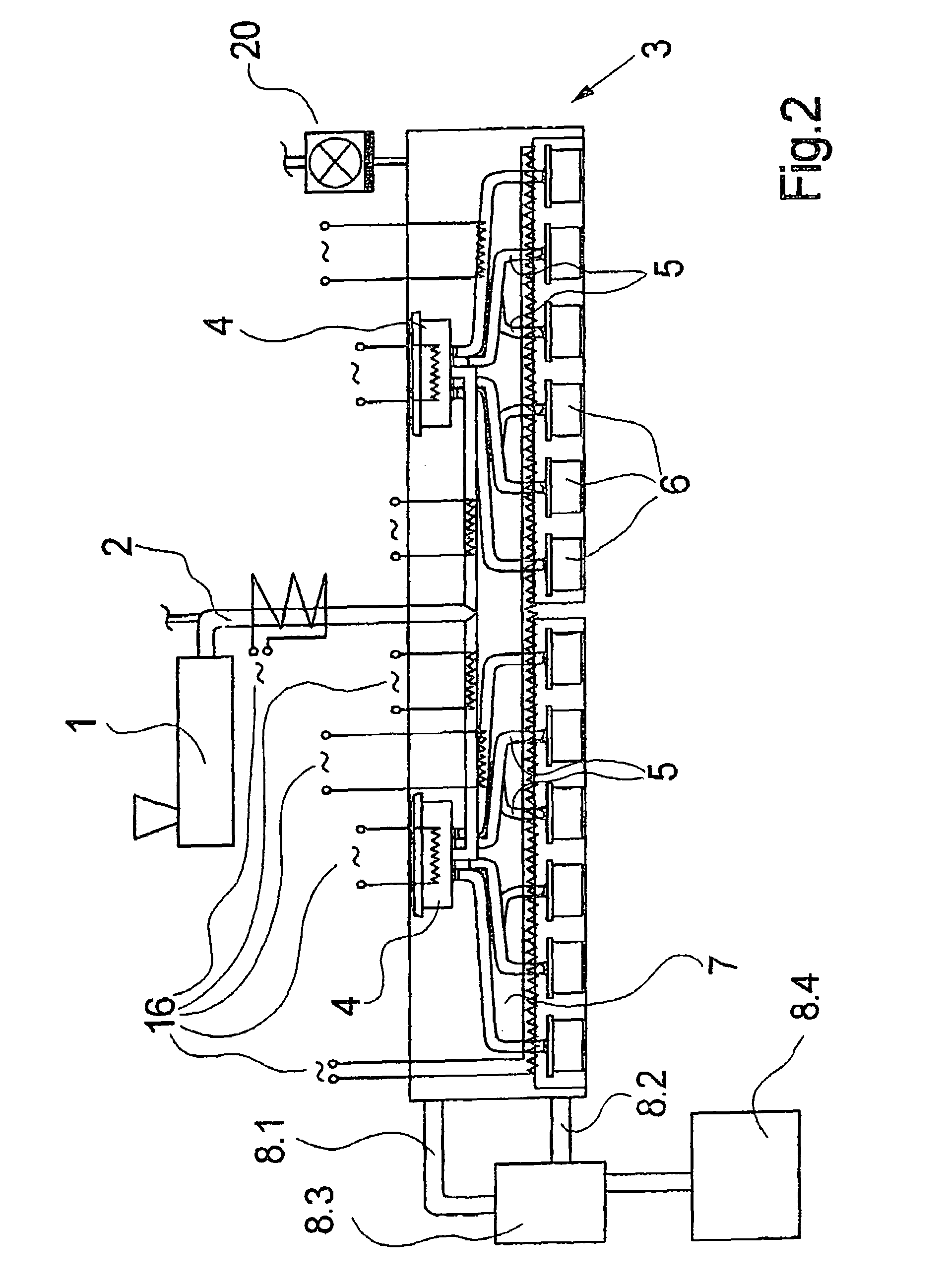Spin beam
- Summary
- Abstract
- Description
- Claims
- Application Information
AI Technical Summary
Benefits of technology
Problems solved by technology
Method used
Image
Examples
Embodiment Construction
[0018]FIG. 1 illustrates in sectional view an inventive apparatus for spinning. A polymer melt is fed from an extruder 1 via a melt feed line 2 to spin beam 3. Instead of extruder 1, a direct polycondensation reactor may be used here as the source for the polymer melt. Inside spin beam 3, melt feed line 2 is apportioned to two spinning pumps 4. Spinning pumps 4 distribute the polymer melt, metered via distribution lines 5, to the individual spinning cans, not shown, which are accommodated in spinning can receivers 6. The filaments for forming the thread are extruded from the polymer melt in these spinning cans. The number of spinning can receivers 6 as well as the number of spinning pumps 4 are chosen here by way of example.
[0019]Inside spin beam 3, a cavity 7 is formed so that it may be filled with a heat transfer medium. This heat transfer medium circulates through an operational heating means 8.3 via an inlet 8.1 and an outlet 8.2. Spin beam 3 is thus heated to operating temperat...
PUM
| Property | Measurement | Unit |
|---|---|---|
| temperature | aaaaa | aaaaa |
| temperature | aaaaa | aaaaa |
| temperatures | aaaaa | aaaaa |
Abstract
Description
Claims
Application Information
 Login to View More
Login to View More - R&D
- Intellectual Property
- Life Sciences
- Materials
- Tech Scout
- Unparalleled Data Quality
- Higher Quality Content
- 60% Fewer Hallucinations
Browse by: Latest US Patents, China's latest patents, Technical Efficacy Thesaurus, Application Domain, Technology Topic, Popular Technical Reports.
© 2025 PatSnap. All rights reserved.Legal|Privacy policy|Modern Slavery Act Transparency Statement|Sitemap|About US| Contact US: help@patsnap.com



